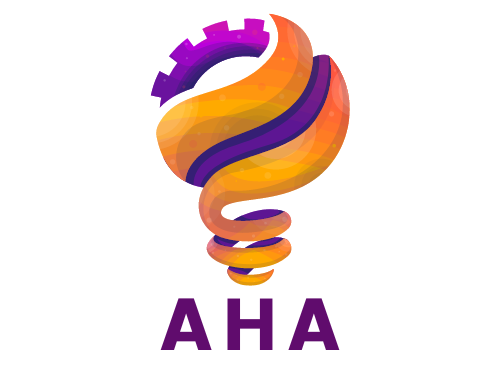
In today’s complex healthcare environment, revenue leakage is one of the most persistent threats to financial sustainability. Unlike large-scale fraud or catastrophic loss, revenue leakage is subtle—often going undetected for months or even years. It’s the result of small inefficiencies, missed charges, denied claims, and outdated processes that collectively erode margins and impact long-term viability.
A 2023 study by the Healthcare Financial Management Association (HFMA) found that hospitals lose an estimated 1% to 5% of net patient revenue annually to preventable leakage. For a mid-sized hospital with $250 million in revenue, that could translate into $2.5 to $12.5 million in annual losses. In a time when margins are already razor-thin, addressing this silent drain is not just a financial imperative—it’s a survival strategy.
This article explores the key sources of revenue leakage in healthcare and offers actionable strategies for identifying, addressing, and preventing these costly losses. From front-end processes to back-end collections, success lies in combining technology, training, data analytics, and accountability to create a revenue cycle that is proactive and airtight.
Understanding Revenue Leakage in Healthcare
Revenue leakage refers to money earned but not collected due to inefficiencies or breakdowns in the revenue cycle. It typically arises from:
- Incomplete or inaccurate charge capture
- Coding errors or omissions
- Delays in claims submission
- Unaddressed denials and underpayments
- Gaps in pre-authorization or eligibility verification
- Ineffective patient collections
- Contractual discrepancies with payers
While many organizations believe their systems are functioning well, small inefficiencies across departments—especially in high-volume service lines—can add up to significant losses over time.
Common Points of Leakage Across the Revenue Cycle
1. Front-End Errors: Eligibility and Authorization
Issues often start at the very beginning of the patient encounter. Failing to verify insurance eligibility or obtain the correct prior authorization leads to downstream denials or write-offs. According to a 2022 Change Healthcare report, denials due to eligibility and authorization issues rose by over 20% in the past three years, driven largely by complex payer rules and inadequate front-end training.
In many organizations, front-desk staff may be under-resourced or lack the real-time tools to perform thorough checks, especially during busy periods. These small errors can result in denied claims, delayed cash flow, and frustrated patients.
2. Incomplete or Inaccurate Charge Capture
Missed charges are one of the most significant yet often overlooked contributors to revenue leakage. These can include:
- Procedures not properly documented in the EHR
- Supplies or implants not billed
- Ancillary services (e.g., anesthesia, radiology) left off claims
A report by the Advisory Board estimated that hospitals undercode or miss charges on 7% to 11% of total services provided. This is particularly prevalent in specialties with high procedural volumes such as orthopedics, cardiology, and gastroenterology.
3. Coding and Documentation Discrepancies
Incorrect, incomplete, or inconsistent coding can lead to denials, underpayments, or audits. In an era of increasingly complex coding rules (especially with specialty services and bundled payments), even minor mistakes can impact reimbursement.
According to the Office of Inspector General (OIG), over 45% of claims reviewed in 2023 had a documentation issue that affected payment accuracy. Many of these were due to either missing documentation to support the code billed or incorrect use of modifiers.
4. Denials and Underpayments Not Properly Worked
Denials are inevitable, but how they’re handled makes all the difference. Many healthcare organizations lack the resources or systems to effectively appeal denials or recoup underpayments. As a result, they simply write off revenue that could have been recovered.
The Medical Group Management Association (MGMA) reports that as much as 65% of denied claims are never resubmitted, even though up to 90% are potentially recoverable. When organizations lack a structured denial management process, this becomes one of the largest sources of preventable revenue loss.
5. Payer Contract Mismanagement
Payers often apply complex reimbursement rules that vary widely by plan, procedure, and provider agreement. Without contract management tools and dedicated payer analysts, many organizations fail to recognize when they’re being underpaid or when a plan violates agreed-upon terms.
Unidentified variances—such as incorrect application of fee schedules or failure to apply escalator clauses—result in organizations leaving money on the table month after month.
6. Ineffective Patient Collections
As high-deductible health plans and patient financial responsibility increase, providers must ensure they’re effectively collecting patient balances. Unfortunately, many providers lack a robust point-of-service collection strategy and rely too heavily on post-service billing—which often yields low returns.
Experian Health data shows that healthcare providers collect only about 55% of patient balances after insurance, and less than 30% if the balance exceeds $500. Missed opportunities at the time of service or lack of follow-up contribute to major collection gaps.
Strategies to Prevent and Eliminate Revenue Leakage
Invest in Front-End Accuracy
- Eligibility Verification Tools: Use automated real-time eligibility verification systems that integrate with EHR and scheduling platforms to catch insurance issues before the visit.
- Pre-Authorization Management: Implement technology that tracks payer rules and automates the authorization process, ensuring required approvals are in place before services are rendered.
- Staff Training: Provide regular training to registration, scheduling, and front-office teams on insurance verification, documentation, and patient financial conversations.
Strengthen Charge Capture Processes
- Clinical Documentation Improvement (CDI): Ensure providers document all billable services accurately. CDI specialists can help align documentation with coding and billing needs.
- Charge Reconciliation Audits: Perform regular audits between clinical notes, supply logs, and billing systems to identify and correct missing charges.
- Mobile Charge Capture: Equip providers with tools to record charges at the point of care, reducing the risk of lost or forgotten entries.
Enhance Coding Accuracy and Compliance
- Certified Coders: Employ certified medical coders with experience in specialty-specific rules and compliance requirements.
- Concurrent Coding Reviews: Use real-time audits to identify documentation gaps and coding errors before claims are submitted.
- AI-Powered Coding Tools: Incorporate advanced tools that assist in code selection based on chart documentation, improving accuracy and speed.
Create a Robust Denial Management Strategy
- Categorize and Track Denials: Segment denials by root cause (e.g., coding, eligibility, authorization) and develop targeted mitigation plans.
- Dedicated Appeals Teams: Ensure that denied claims are promptly reviewed, appealed, and tracked through resolution. Use templated appeal letters for common scenarios.
- Analyze Trends: Use analytics tools to monitor recurring denial patterns and identify training or workflow changes that can prevent them upstream.
Implement Contract Management Systems
- Contract Modeling and Benchmarking: Model payment expectations using contract terms and compare actual payments to detect discrepancies.
- Underpayment Detection Tools: Use software that flags underpaid claims based on agreed fee schedules and automatically initiates appeals or follow-ups.
- Negotiate Proactively: Use payment data and volume leverage to renegotiate payer contracts and close reimbursement gaps.
Improve Patient Collection Outcomes
- Upfront Estimates and Collections: Provide patients with cost estimates before care, and collect known balances at the time of service when possible.
- Clear Communication: Simplify billing statements and use plain language to help patients understand what they owe and why.
- Omnichannel Payment Options: Offer multiple payment options, including online portals, mobile apps, and interest-free financing plans.
The Role of Technology and Data Analytics
Technology plays a pivotal role in revenue leakage prevention by enabling visibility, consistency, and automation.
- Revenue Integrity Platforms: These solutions integrate clinical, financial, and coding data to proactively identify gaps and ensure every service provided is appropriately billed.
- Artificial Intelligence and Predictive Analytics: AI tools can detect anomalies in payment patterns, flag risky claims, and prioritize collections efforts based on likelihood of success.
- Workflow Automation: Robotic Process Automation (RPA) can handle repetitive tasks such as claim status checks, eligibility reviews, and payment posting—reducing errors and freeing up staff for higher-value work.
In organizations where multiple systems are in place, integration is key. Data silos often lead to missed handoffs and accountability gaps, which are major contributors to leakage. Ensuring seamless communication between the EHR, practice management system, and RCM tools is essential for a holistic revenue management approach.
Building a Culture of Revenue Accountability
While tools and systems are critical, revenue integrity must also be embedded in the organization’s culture. Everyone—from front desk staff to clinicians to finance executives—has a role in ensuring accurate, complete, and timely revenue capture.
- Cross-Functional Collaboration: Break down silos between departments to identify where revenue is lost and create joint solutions.
- Scorecards and KPIs: Use dashboards to monitor metrics like denial rates, days in A/R, patient collections, and missed charge percentages.
- Continuous Training: Regular education on payer rules, documentation best practices, and compliance standards ensures staff are equipped to prevent leakage.
Leadership must also foster a mindset that sees revenue integrity not just as a finance issue, but as a mission-critical function that supports patient access, staff retention, and service expansion.
Revenue leakage is not the result of one large failure—it’s the sum of many small gaps that, over time, drain an organization’s financial health. But these losses are not inevitable. By investing in accurate front-end processes, charge capture rigor, coding compliance, denial recovery, and patient collections, healthcare providers can close these leaks and strengthen their financial foundation.
With the right mix of people, processes, and technology, healthcare organizations can transform their revenue cycle into a strategic asset—one that fuels growth, enables better care, and ensures sustainability in an increasingly value-driven landscape.
